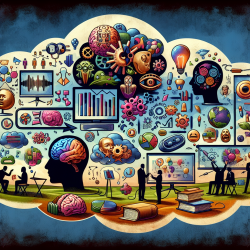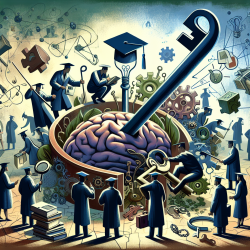As a speech-language pathologist, leveraging data-driven insights to improve therapeutic outcomes is paramount. The recent case report, "Multisensory stimulation and rehabilitation for disability improvement: Lessons from a case report," offers compelling evidence on the benefits of multisensory environments (MSEs) for children with severe disabilities, specifically spastic quadriplegia and intellectual disability.
This blog aims to distill key findings from the study and provide actionable strategies for practitioners to enhance their therapeutic interventions.
Understanding the Case Report
The case report focuses on a 7-year-old boy diagnosed with spastic quadriplegia and severe intellectual disability. Spastic quadriplegia, the most severe form of Infantile Cerebral Palsy (CP), impairs the use of legs, arms, and body, often accompanied by language disorders and profound intellectual disability.
The child underwent rehabilitation in a multisensory room designed to provide visual, tactile, auditory, and proprioceptive sensory experiences. The intervention was structured into two phases: relaxation and stimulation. The outcomes showed a significant reduction in self-harm and motor stereotypies, along with improved sustained attention and therapeutic compliance.
Key Findings and Their Implications
The study presents several critical outcomes that can inform your practice:
- Reduction in Self-Harm and Motor Stereotypies: The multisensory environment facilitated a decrease in harmful behaviors, indicating that sensory-rich settings can help manage maladaptive behaviors.
- Improved Sustained Attention: The child exhibited better focus and engagement, which is crucial for effective therapy sessions.
- Enhanced Therapeutic Compliance: Greater involvement in activities suggests that multisensory environments can make therapy more engaging and enjoyable for children.
Implementing Multisensory Environments in Your Practice
To replicate the success of this case study, consider the following strategies:
- Create a Multisensory Room: Design a space that includes elements like relaxing music, colored lights, tactile objects, and interactive components such as buttons to change light colors.
- Structured Sessions: Divide therapy into relaxation and stimulation phases. Use calming sounds and lights for relaxation, followed by interactive activities to stimulate the senses.
- Individualized Approach: Tailor the sensory experiences to the child's specific needs and abilities. For example, allow the child to choose music or tactile objects to foster a sense of control and engagement.
Encouraging Further Research
While the case report offers promising results, it also highlights the need for more extensive research. Future studies should focus on randomized controlled trials to validate the efficacy of multisensory environments in reducing disability and improving quality of life for children with severe disabilities.
By integrating multisensory stimulation into your therapeutic practice, you can create more engaging and effective interventions that cater to the unique needs of each child. For those interested in exploring this further, I encourage you to read the original research paper: Multisensory stimulation and rehabilitation for disability improvement: Lessons from a case report.










